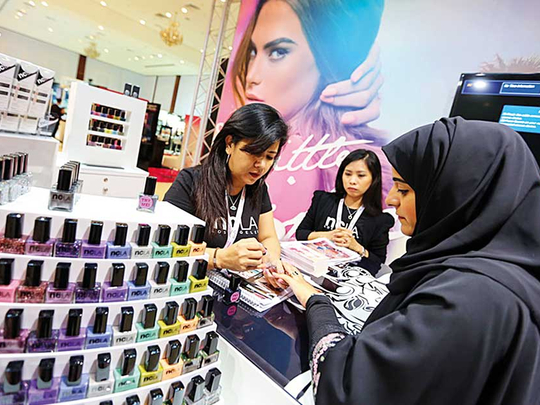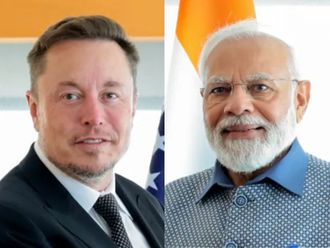
DUBAI
Dubai continues to be the key driver in the region’s trade in fragrances and cosmetics, according to the latest trade figures released by Dubai Customs, at the Beautyworld Middle East 2017, which opened in Dubai on Sunday.
The data from Dubai Customs indicates that the emirate imported Dh12.16 billion ($3.31 billion) worth of fragrances and cosmetics in 2016, while exporting Dh1.83 billion ($498 million) worth and re-exporting Dh6.69 billion ($1.82 billion) of fragrances and cosmetics over the same period.
The total trade of Dh20.68 billion represents a growth of 23 per cent from 2012 to 2016.
Even as the Middle East grows in prominence as a global destination for beauty and wellness products, Dubai remains the epicentre of activity.
Dubai’s key trading partners, according to Dubai Customs, are France, USA, Saudi Arabia, Italy and the UK.
They made up 42 per cent of the total trade in fragrances and cosmetics.
The same countries, in addition to India, formed the key source countries for Dubai’s imports of fragrances and cosmetics, making up 60 per cent of the total.
Key export and re-export markets for Dubai were: Saudi Arabia, Iran, USA, Kuwait and Oman, who together took up 48 per cent of Dubai’s exports.
Into its second day, Beautyworld Middle East features 1,580 exhibitors from 60 countries. The show has representations from 22 country pavilions, with exhibitors scheduling over 100 product launches over the show’s three days.
The UAE has a per capita spend of around $239 (Dh877) on beauty products, making it the seventh highest in the world, according to a report released in April by research firm Euromonitor International.
“In terms of per capita consumption, the UAE is up two positions on 2015, making it now the seventh highest consumer of beauty products in the world in 2016,” said Eyad Hijjawi, a senior consultant at Euromonitor.
This figure is almost four times larger than the global average of $60.
The growth of the Middle East and Africa’s (MEA) $30 billion beauty market is set to slow in 2017, according to the study.
Despite being expected to grow by $12 billion in the next four years, the MEA’s share of the global $445 billion cosmetics industry will be hampered by lower growth in the GCC and Iran.
“The low oil price turmoil is definitely hitting consumer confidence in the region, especially in the GCC region,” he said.












